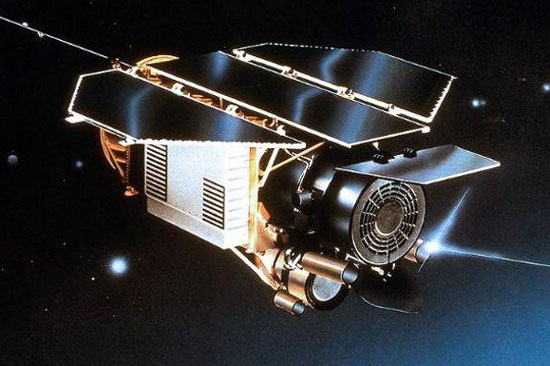Can the German satellite fall to Vietnam?
Germany's vacant ROSAT satellite will fall to Earth from October 21-24. A very large area on Earth, not excluding Vietnam, may have to catch a fragment of this satellite.
>>>Expected Rosat satellite plunges down to the weekend
According to the DLR German Space Agency warning, the 3-ton ROSAT telescope can "land anywhere in the area from the latitude 53 degrees north to 53 degrees south". The ability to hit people is 1/2000, much higher than the UARS satellite last month.

The position where Rosat will land on Earth does not exclude Vietnam.
In addition, due to the specific heat-resistant structure of ROSAT, when colliding with the atmosphere, many satellite fragments will be able to survive the 'fire wall ' to continue to plunge to the ground. In particular, the most worrisome is the heat-resistant mirror weighing 475kg.
Dr Ian Griffin of the British Association of Science and Discovery Centers said that the earth's atmosphere would significantly reduce the speed of the satellite's fall. Besides, most satellites when falling to Earth will be consumed by high temperatures in the blink of an eye.
The reason why it is difficult for scientists to predict the location of the satellite's fall is because the density of the atmosphere in different regions is also different, so friction is also likely.
Just guessing the wrong moment for a few minutes is that satellites have been able to land on the site hundreds of kilometers from the predicted place, because the speed of falling is enormous.
'ROSAT has no remote control system so people cannot change its trajectory or falling direction. Falling time and falling locations cannot be accurately predicted. Currently, we can only estimate the time spent with the error plus / minus two days' , Dr. Griffin shared with the Daily Mail.
Earlier, the German Space Center warned that about 30 fragments with a total weight of 1.6 tons could land on the surface of the Earth.
Rosat was launched into space on June 1, 1990 in a mission intended to last 18 months. However, it operated for more than 8 years before officially switching off on February 12, 1999.
In terms of size, the ROSAT is much smaller than Russia's 135-ton MIR space station (falling to Earth in 2001). Mir has fallen to the South Atlantic Ocean because two-thirds of the Earth's surface is sea.
- Accurate fall point of German satellites
- Satellite weighs 1 ton preparing to fall to Earth
- Russian satellites are about to fall to Earth
- The fall of satellites made the Earth
- Vietnam will launch the third satellite in the second quarter of 2013
- Launching many satellites
- Vietnam can catch satellite fragments
- Vietnam is about to launch a US $ 72 million satellite to space
- Vietnam will use VNREDSat-1 effectively
- By 2020, Vietnam will produce satellites
- Vietnam is about to build a nearly 600kg satellite
- Micro - Dragon satellite of Vietnam will launch in Japan
 Van Allen's belt and evidence that the Apollo 11 mission to the Moon was myth
Van Allen's belt and evidence that the Apollo 11 mission to the Moon was myth The levels of civilization in the universe (Kardashev scale)
The levels of civilization in the universe (Kardashev scale) Today Mars, the sun and the Earth are aligned
Today Mars, the sun and the Earth are aligned The Amazon owner announced a secret plan to build a space base for thousands of people
The Amazon owner announced a secret plan to build a space base for thousands of people Beijing 'narrowly escaped death'
Beijing 'narrowly escaped death'  Satellite Rosat rushes into the earth's atmosphere
Satellite Rosat rushes into the earth's atmosphere  Rosat 'satellite may fall to the Indian Ocean'
Rosat 'satellite may fall to the Indian Ocean'  Accurate fall point of German satellites
Accurate fall point of German satellites  Estimated Rosat satellite plunges down to the weekend
Estimated Rosat satellite plunges down to the weekend  Old satellites race each other to fall to Earth
Old satellites race each other to fall to Earth 